Restoring a stairwell window from 1908
By Ashton R. Young
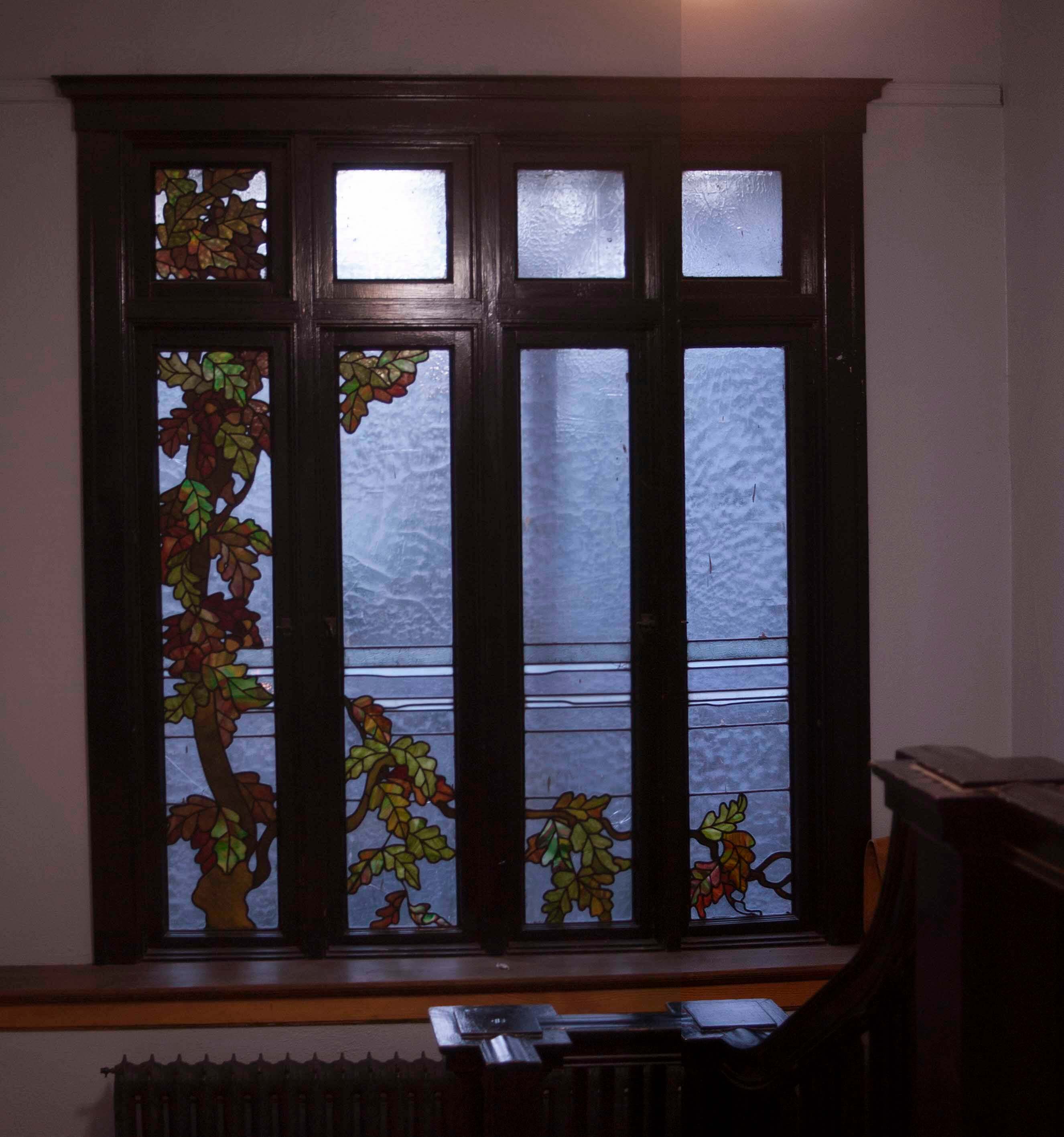 |
| Winter storms most frequently approach the site from the northwest and this west-facing, exterior window had been exposed directly to the elements for 110 years. No sheathing had been provided, nor did it appear that the lights had ever been removed from their original mountings in the painted, wooden frames. The record low during that period was -16 F and the record high was 108 F. The lowest average low during those years was 22 F. The highest average high during that time was 93 F. |
The first step was to perform an on-site evaluation of the window's condition. The next step was preparing a report of visible damage; setting forth what damage might be discovered upon disassembling the windows; proposing a scenario for restoring the window; identifying dependencies and describing what restoration might look like; and suggesting a fee schedule for completing the work. These are some of the photos from the on-site evaluation:
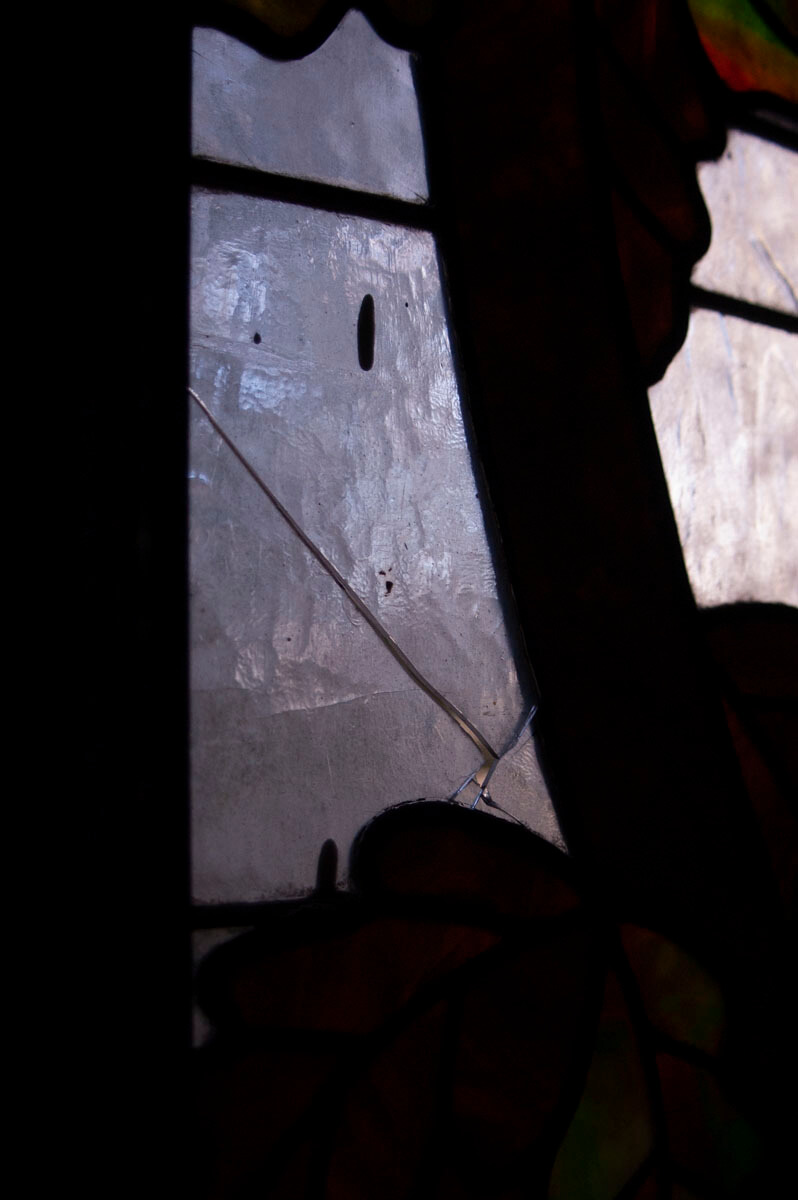 |
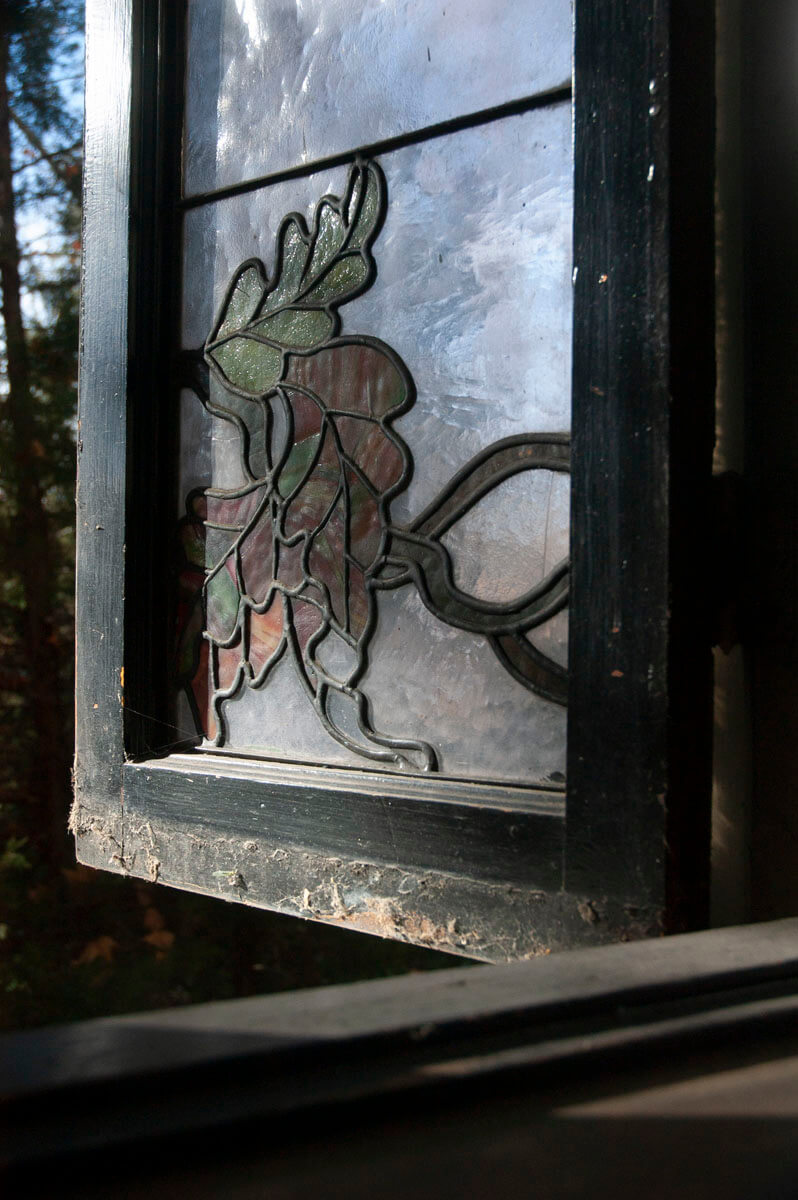 |
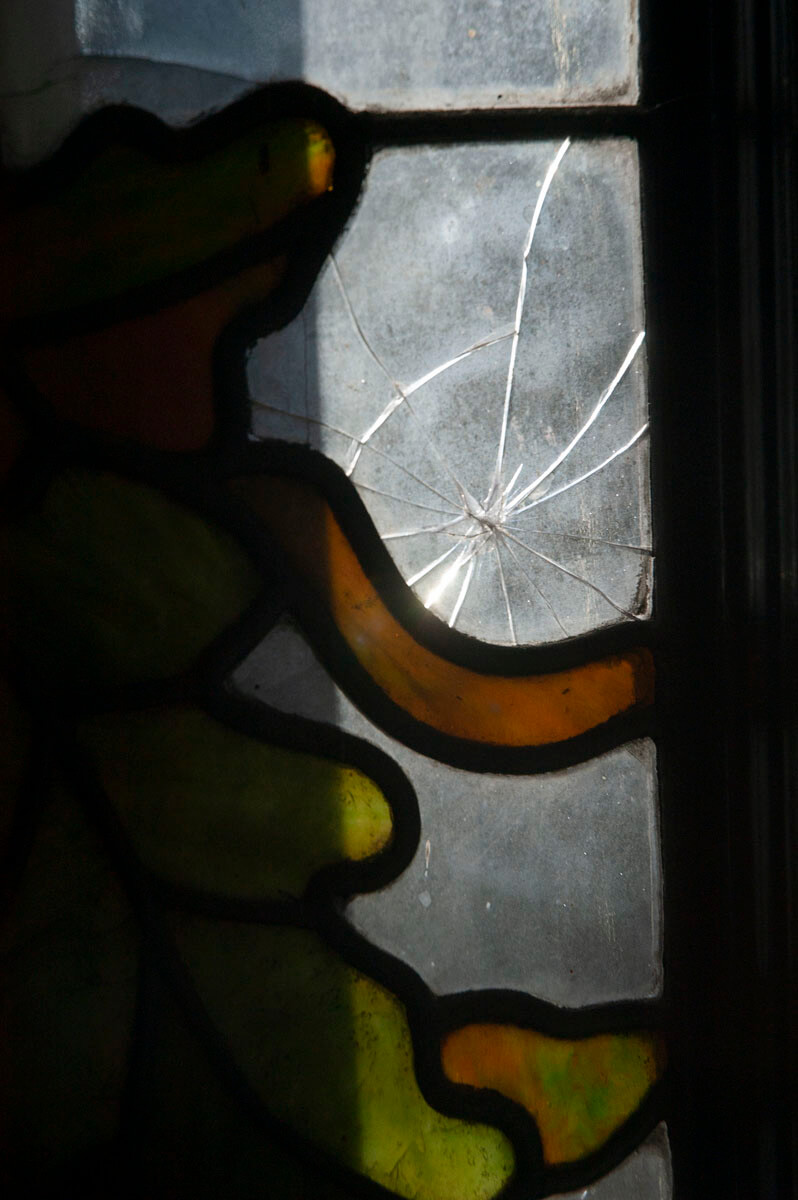 |
 |
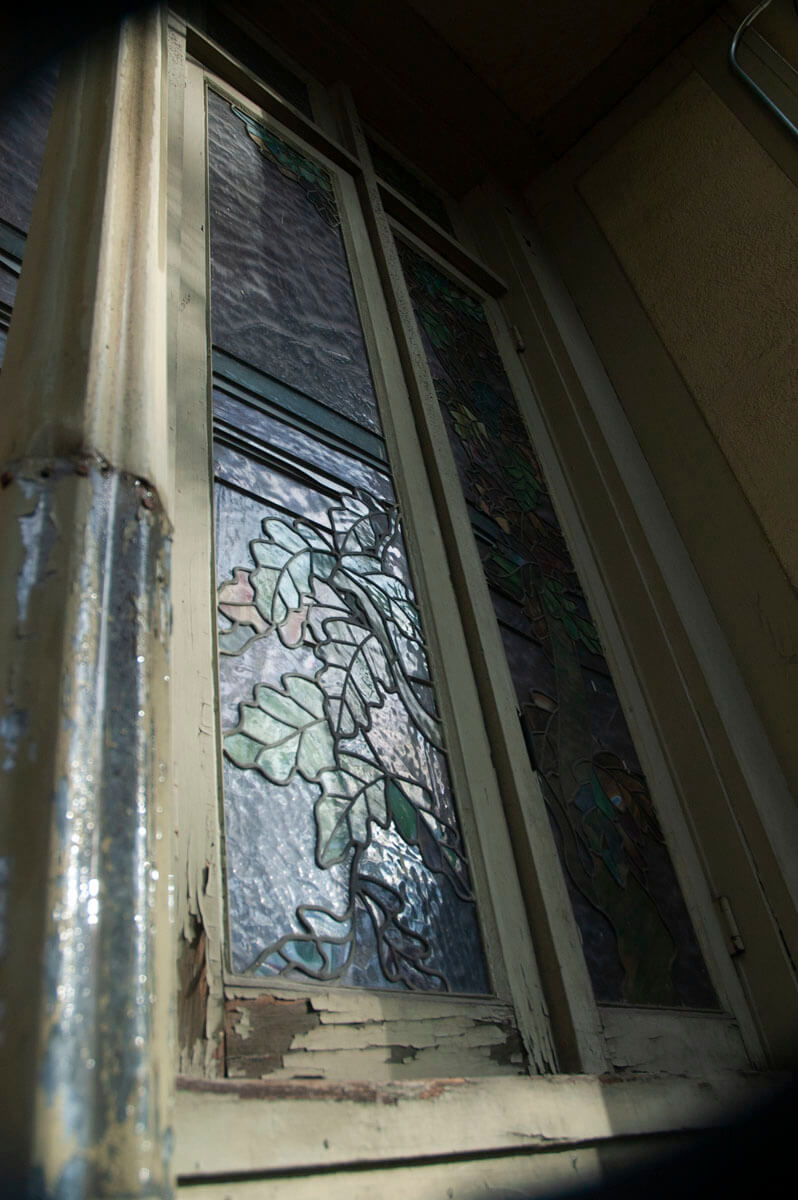 |
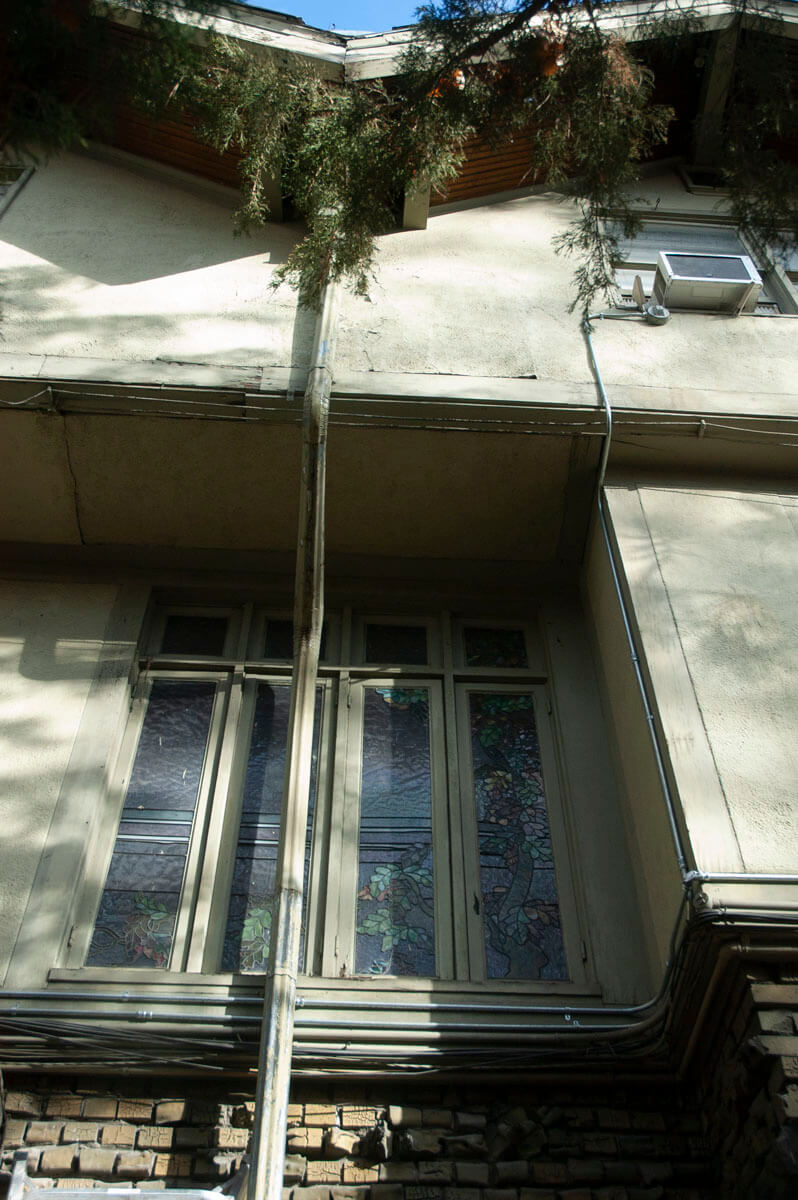 |
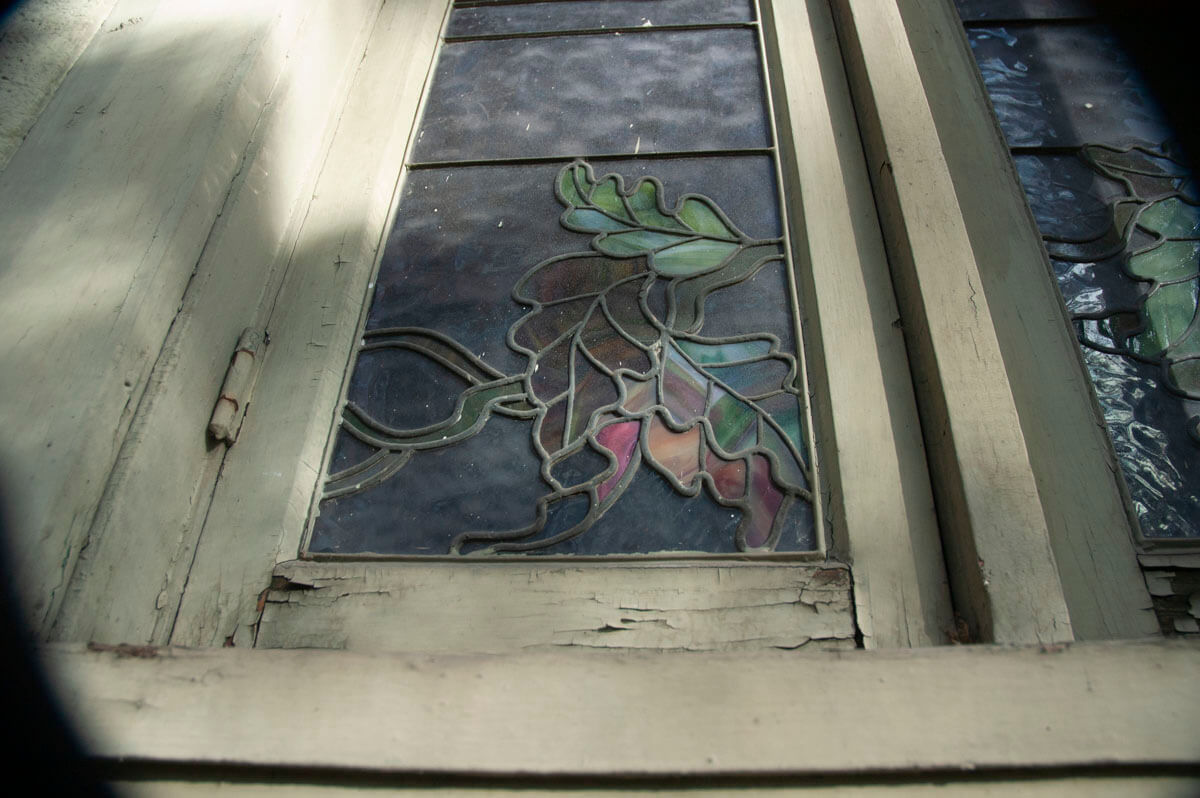 |
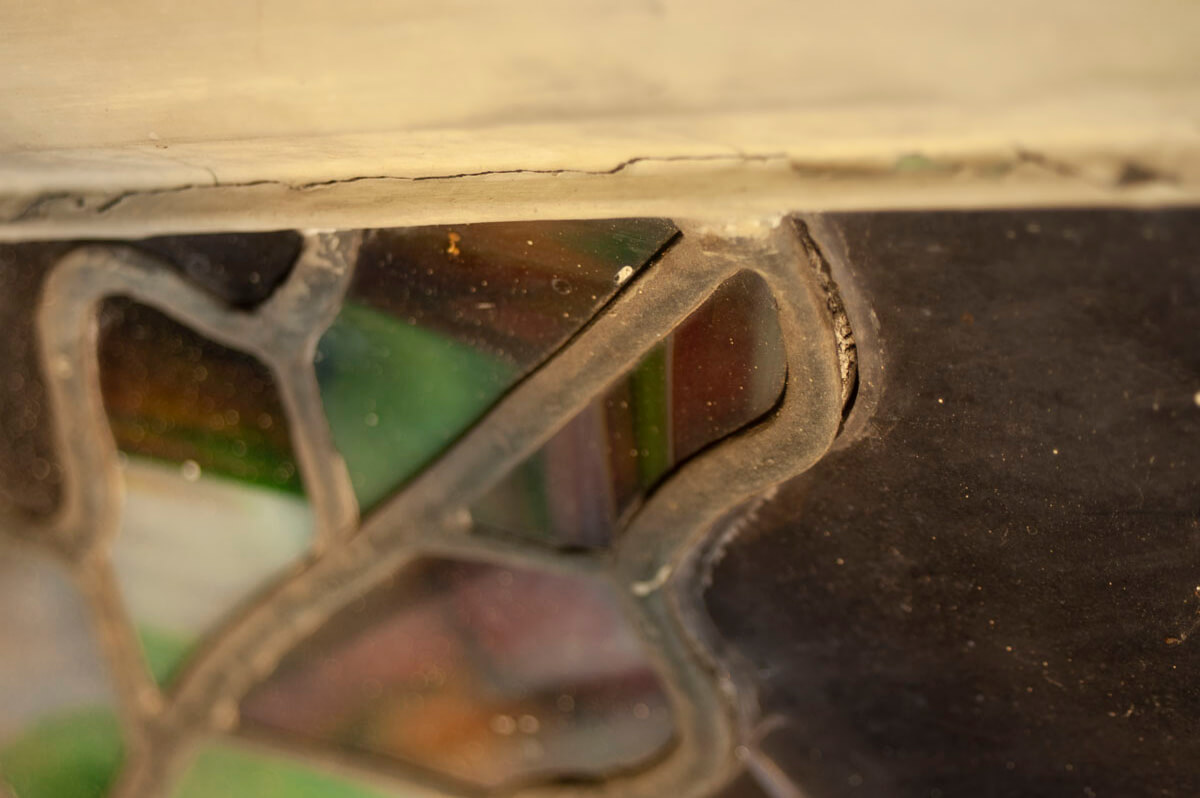 |
The report identified the following categories of damage:
Cracked glass
Damaged came
Severely bowed came
Deteriorated glazing compound
Paint overspray and runs
With window casements and frames being repaired by other contractors, the Studios focused exclusively on the glass, which was to be remounted (without triple-glazing) into either refurbished or replacement frames and casements. After the large windows had been removed, they were transported to the Studios, where Ashton began working on them in the barn .
 |
| The first task was to create a map of the configuration of the many pieces of glass in the window. Ashton chose to make the map by means of a charcoal rubbing taken from the window. He then placed the rubbing on a flat work surface near the window. As intact pieces of glass were removed from damaged areas, the undamaged were placed on the rubbing (or map) at their original location. Pieces damaged beyond re-use were useful only in choosing a matching glass to be used in their stead. |
 |
| Not all of the window was disassembled, as shown in this photograph. And even in damaged areas, from which pieces were removed, islands of undamaged regions (within damaged areas) were also left intact. |
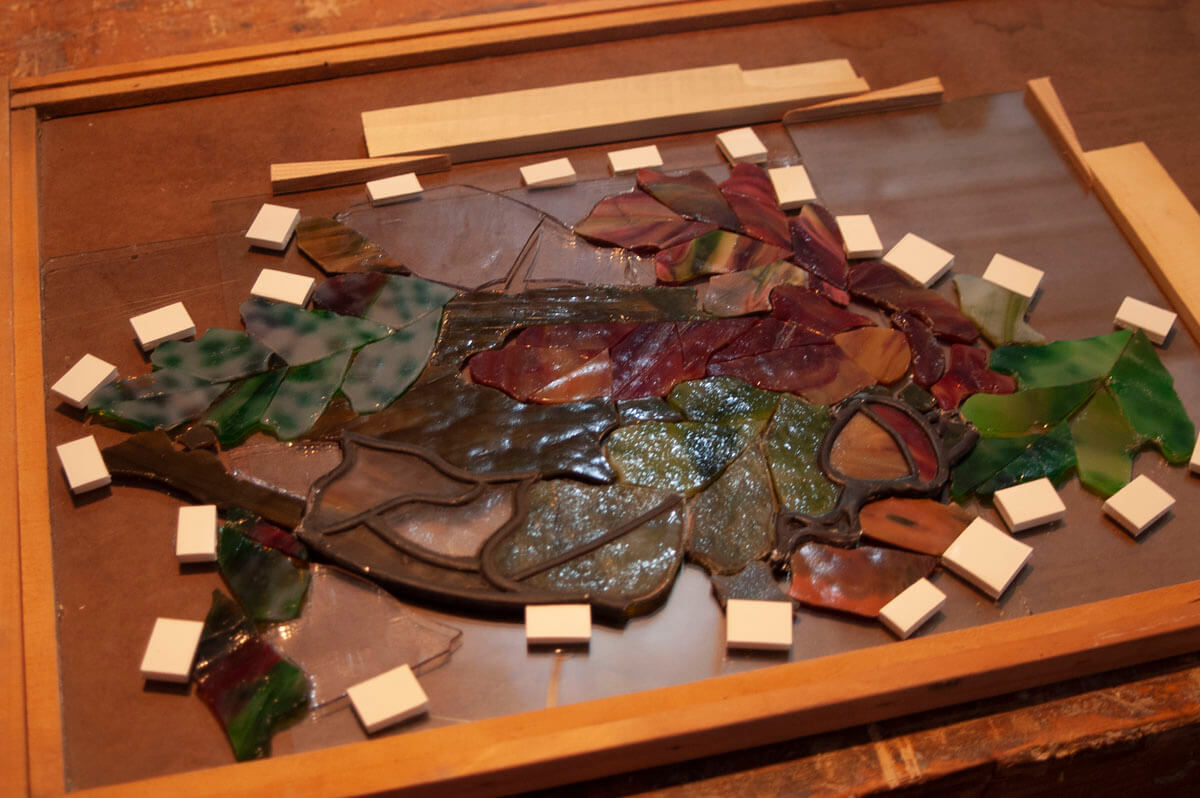 |
| Shown here is a region containing areas remaining intact as well as pieces in need of replacement. This is the stage during which replacement glass is selected for areas in which the original glass has been damaged beyond re-use. |
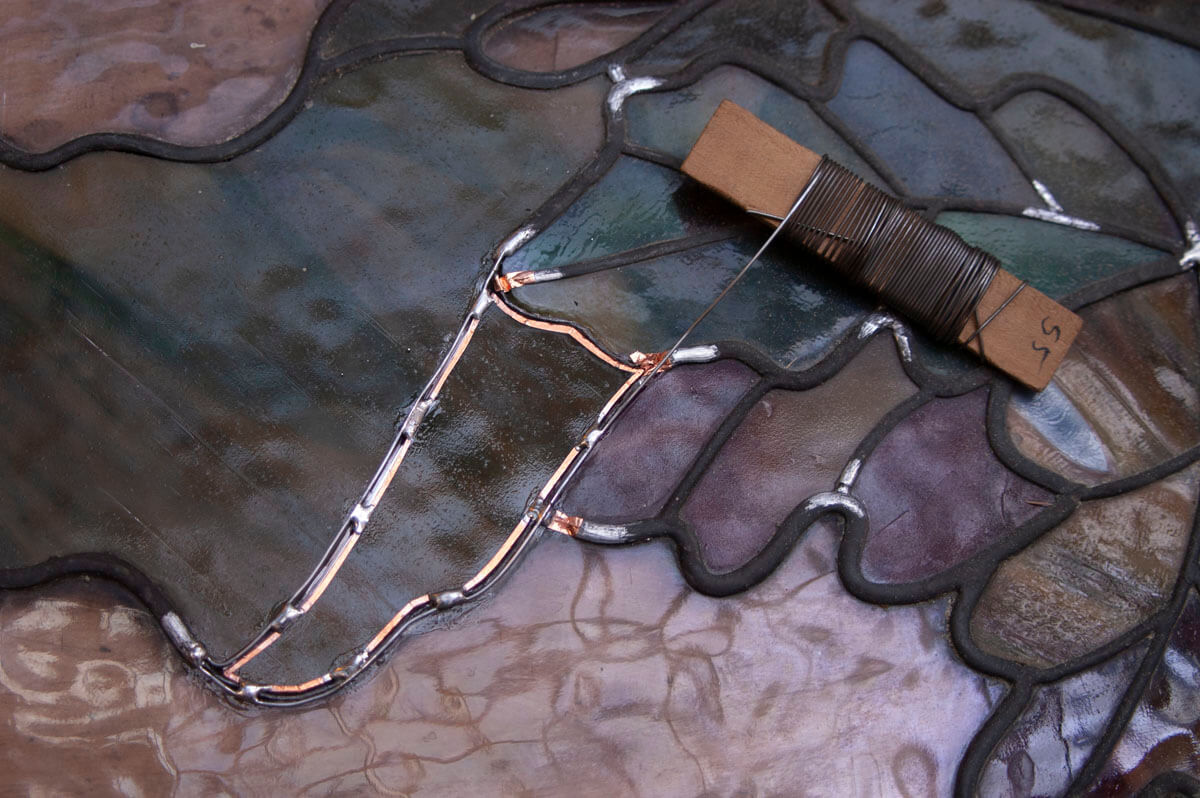 |
| With a replacement piece of glass in place, this areas is ready for solder. Before inserting the replacement glass, it was lined with foil. Then wire was bent and spot-soldered into place to simplify final soldering. The wire provides a track that will contain the solder and ensures that it forms a flange along the seam, to hold the piece of glass in place. |
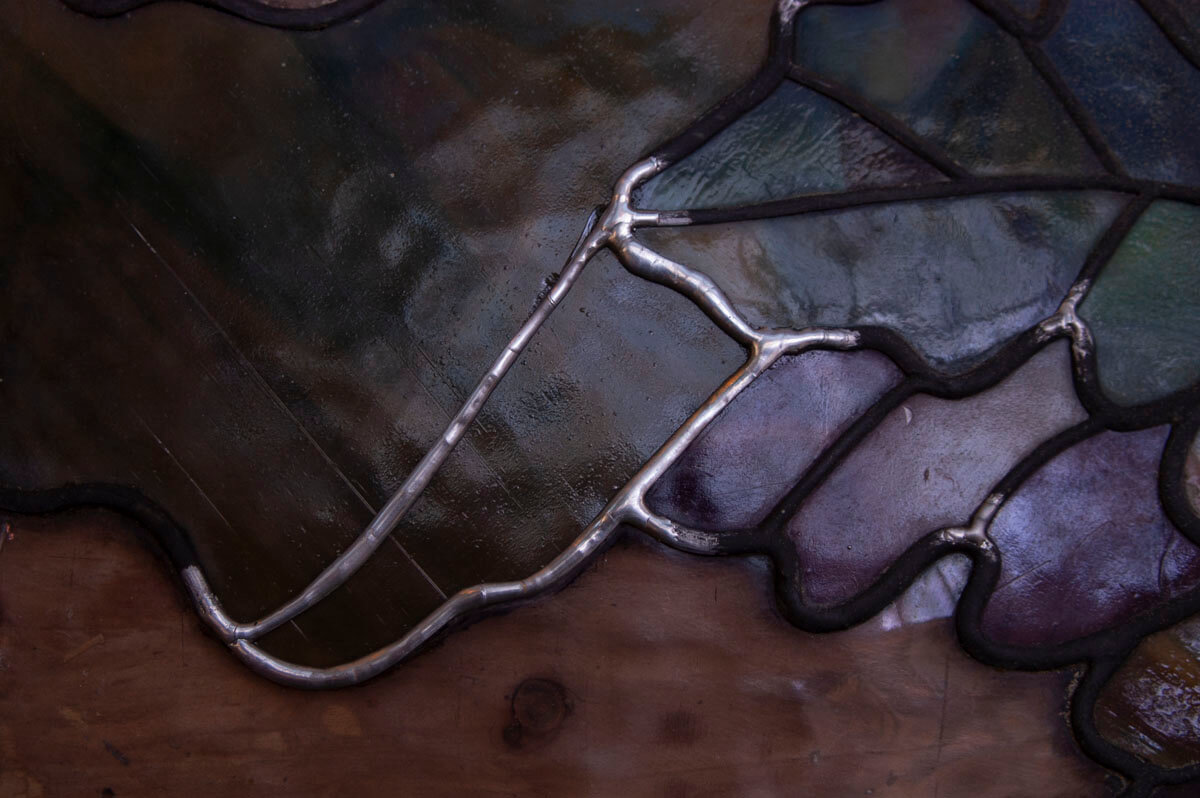 |
| The soldering and wire cover the seam nicely and, when stained to match the original leading, only a trained eye is likely to discern the repair. |
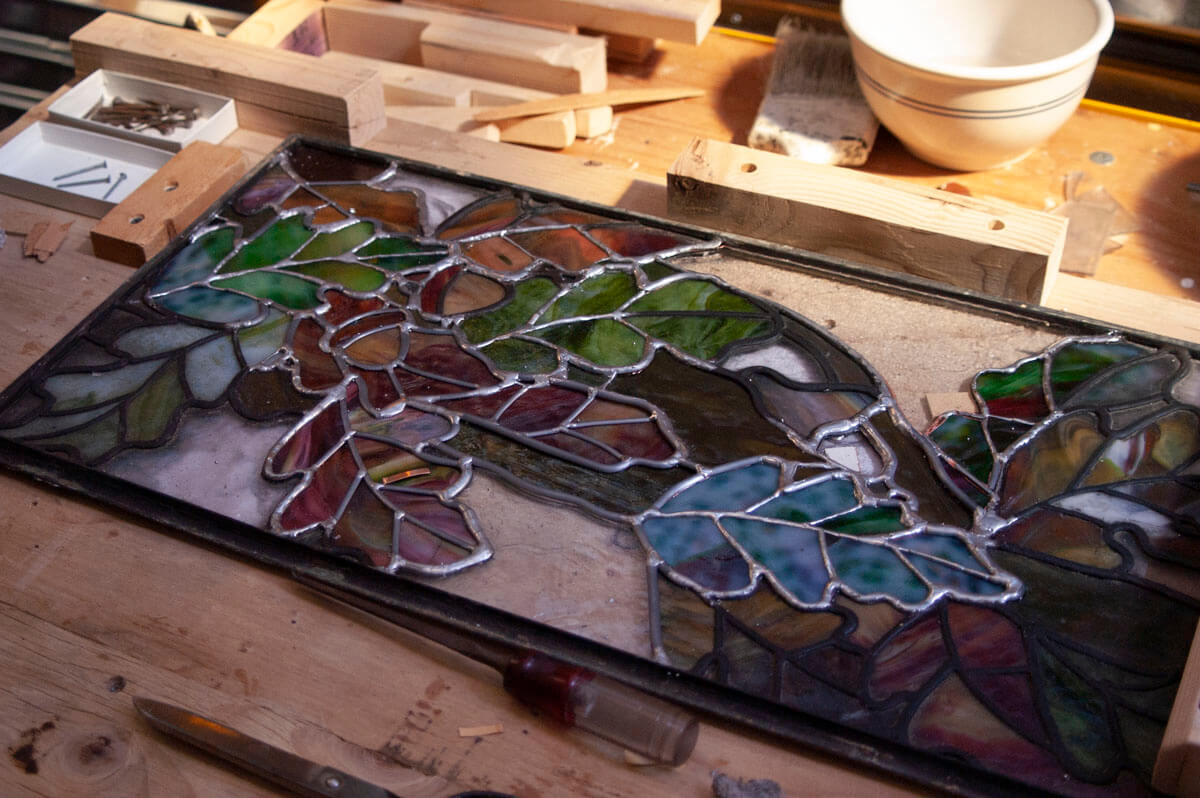 |
| Another damaged region has been reassembled. New lead and solder have a silvery sheen. In order to blend such repairs with existing lead work, a patina agent is brushed over the area, which darkens the lead. |
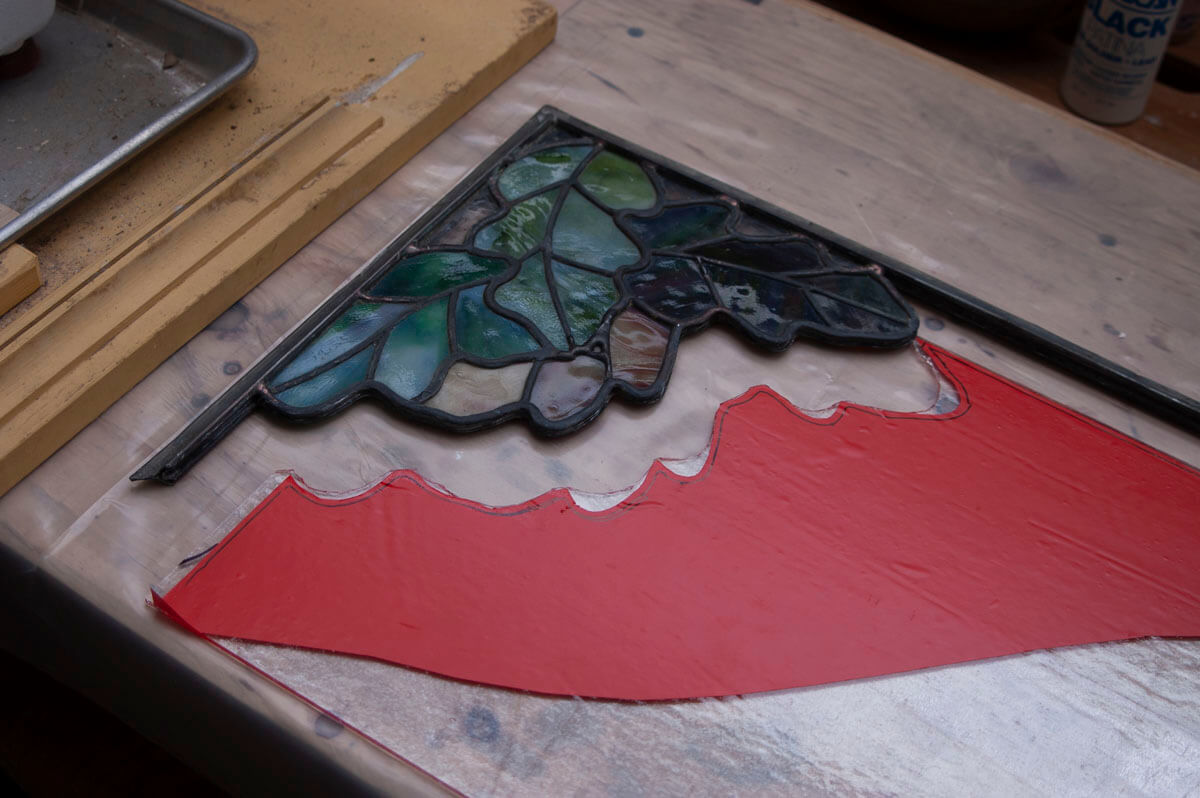 |
| This window sustained a long crack in a clear pane of glass. To reconcile the edge of a replacement pane with the severe contours of a leaded region, the contours were traced onto a piece of vinyl. The vinyl then served as a pattern for cutting away glass from the new pane. In this photograph, grozing pliers were used to remove most of the unneeded glass. The glass remaining will be ground away. |
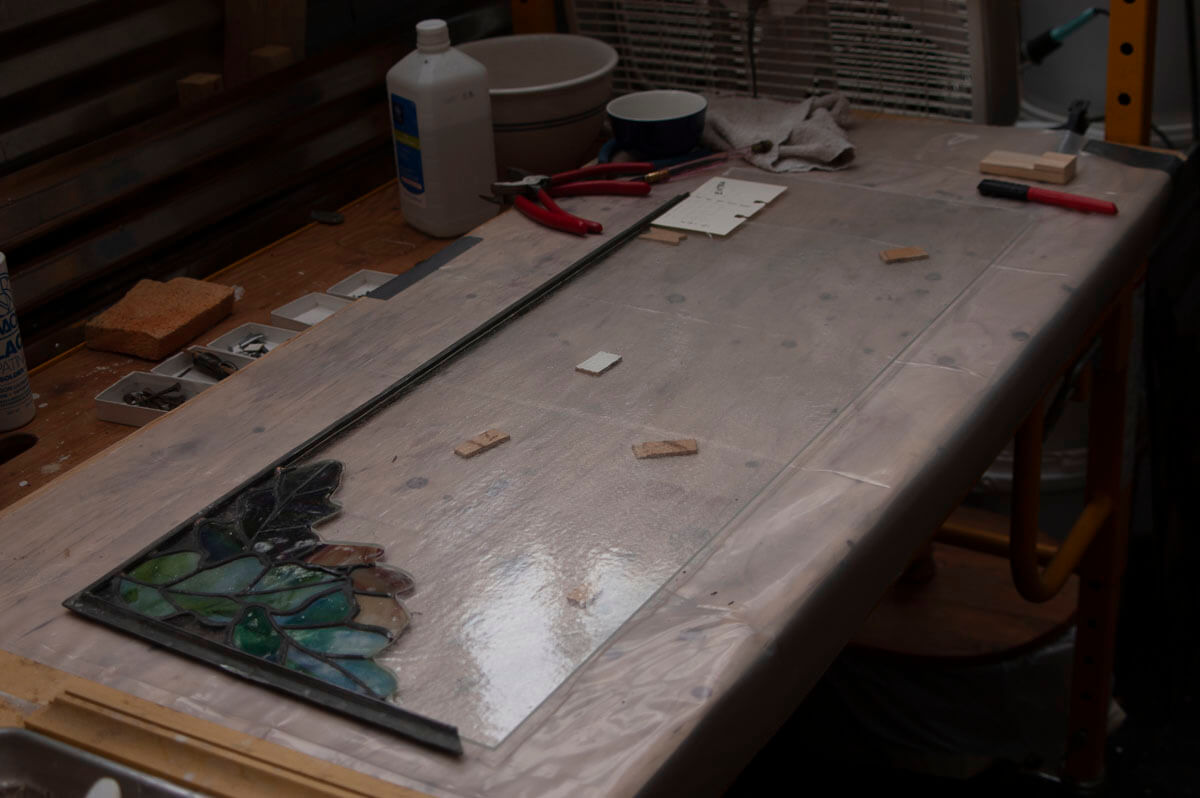 |
| Having been reconciled with the contours of the leaded region, the large sheet of glass is placed and readied for installation. |
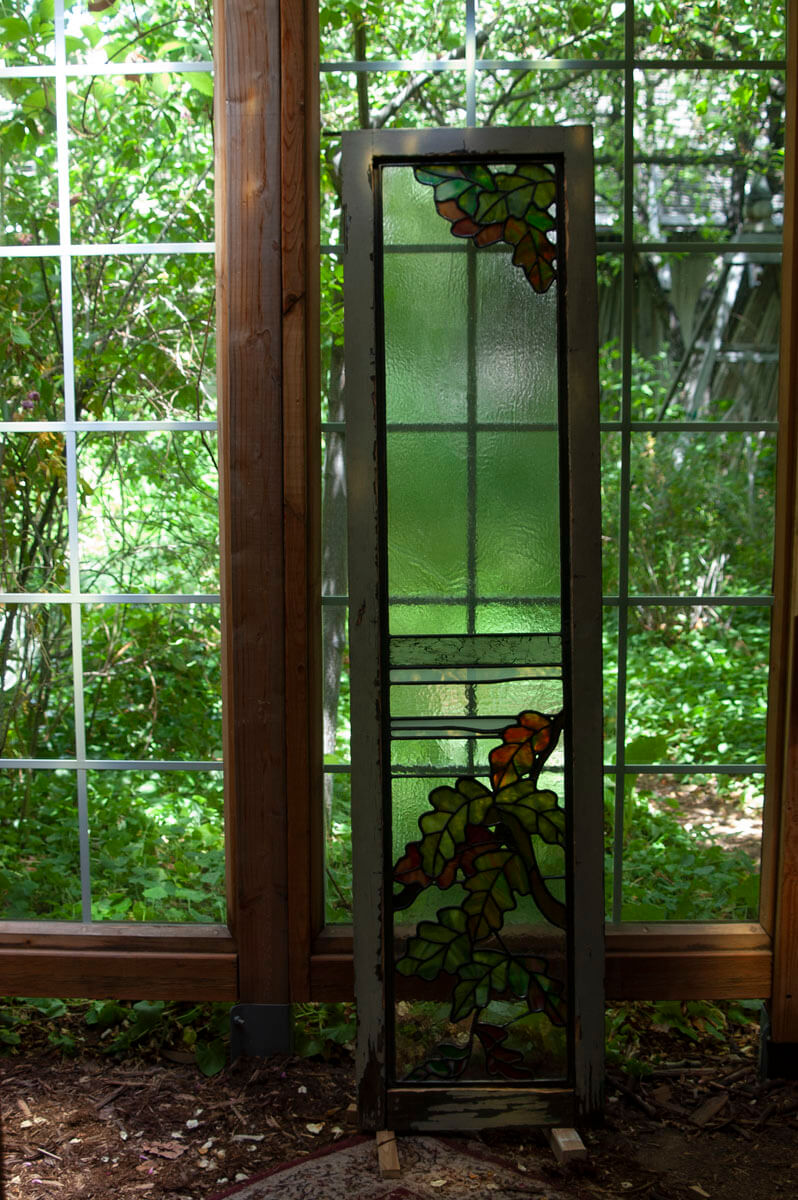 |
| The refurbished window is returned to its wooden frame, where it is temporarily secured before being returned to the carpenter responsible for restoring the woodwork. |
visit our overview page for the
knight-mangum mansion renovation and restoration project
knight-mangum mansion renovation and restoration project
Tags: 2018, Project commentaries, Restoration and remodeling, Stained glass
Browse articles by year: 2025 . 2024 . 2023 . 2022 . 2021 . 2020 . 2019 . 2018 . 2017 . 2016 . 2015 . 2014 . 2013 . 2012 . 2011 . 2010 . 2009 . 2008 . 2007 . 2006 . 2005 . 2004 . 2003 . 2002 . 2001 . 2000 . 1999 . 1998 . 1997 . 1996
Browse articles by topic: Art lessons . BenHaven Archives . Blank art diaries . Fine art photography . Framing . Illustration . Inspiration and creativity . Isles of Rune . Limited Editions Collection . My Fathers Captivity . News . Novellas . Oil paintings and prints . Operations announcements . Orders and shipping . Overview . Portfolios . The Papers of Seymore Wainscott . Project commentaries . Recipes by Nancy Young . Recommended reading . Recommended viewing . Temple artworks . The Storybook Home Journal . Tips and techniques . Tools supplies and operations
Browse articles by topic: Art lessons . BenHaven Archives . Blank art diaries . Fine art photography . Framing . Illustration . Inspiration and creativity . Isles of Rune . Limited Editions Collection . My Fathers Captivity . News . Novellas . Oil paintings and prints . Operations announcements . Orders and shipping . Overview . Portfolios . The Papers of Seymore Wainscott . Project commentaries . Recipes by Nancy Young . Recommended reading . Recommended viewing . Temple artworks . The Storybook Home Journal . Tips and techniques . Tools supplies and operations